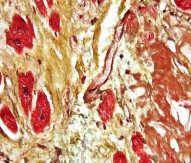
Proteins could hold antibiotic clues
Scientists at Imperial College London have identified four new proteins that act as receptors for an essential signalling molecule in bacteria, including MRSA. The receptors are thought to play a key role in enabling bacteria to respond to their environment. Their discovery provides scientists with vital clues in the hunt for new antibiotics.
The bacterium Staphylococcus aureus causes life-threatening diseases in hospital patients and in previously healthy people. Methicillin-resistant S. aureus strains (commonly known as MRSA) are especially difficult to treat due to their antibiotic resistance. Scientists are therefore eager to understand the chemical processes that allow bacteria to respond to changes in their environment. Interfering with these processes could help prevent bacteria from surviving inside the human body.
A recently discovered molecule called c-di-AMP appears to play a vital role as a messenger in many bacteria, carrying signals between parts of the cell. There is evidence that strains with more c-di-AMP are more resistant to antibiotics. However, very little is known about what processes in the cells are regulated by c-di-AMP. Molecules work by binding to specific receptor proteins, which act as switches for cellular functions.
Leading the study, Angelika Gründling, from the MRC Centre for Molecular Bacteriology and Infection at Imperial College London, said: “What makes this molecule special…is that there is now growing evidence that many bacteria need to produce this molecule in order to grow and divide, so it’s an essential component of the cell.”
Dr Gründling added: “There is now also increasing evidence that S. aureus strains with high c-di-AMP levels show increased resistance to methicillin-type antibiotics. This indicates that c-di-AMP might help bacteria to better survive antibiotic treatment and by inhibiting c-di-AMP synthesis we might be able to increase the effectiveness of certain antibiotics.”
The new study is published in the Proceedings of the National Academy of Sciences. It was funded by the European Research Council, the Wellcome Trust and the EMBO.




